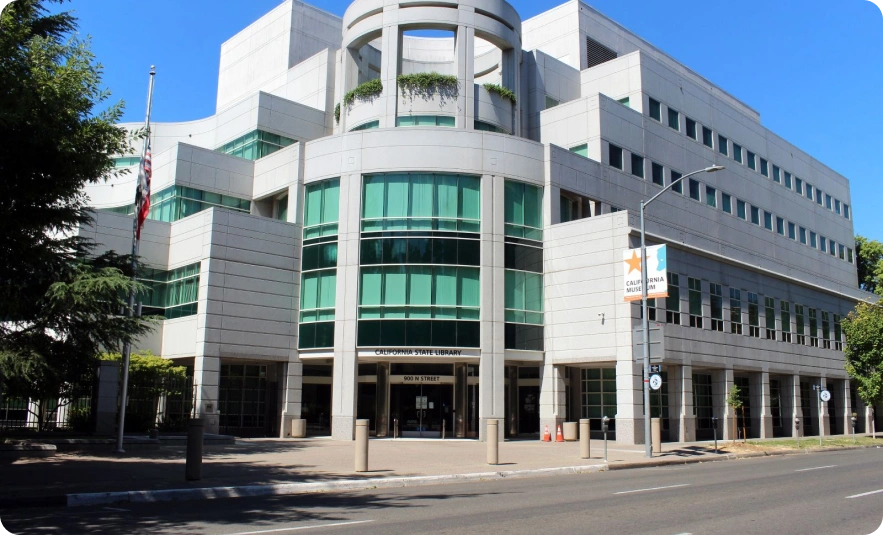
How eRecordsUSA Helps Safeguard California’s Historic Assets
eRecordsUSA digitized over 64,000 pages of irreplaceable government records and cultural heritage materials under the California State Library’s Digital Concierge Program (DCP). This archival digitization initiative preserved fragile historical items—such as photographs and bound volumes—using FADGI 3-star standards.
Access the full FADGI 3-star digitization standards in the official Technical Guidelines for Digitizing Cultural Heritage Materials (2023, Third Edition).
The project produced secure, metadata-rich files including XML metadata and .md5 checksums through non-destructive workflows. These digital assets now enhance California’s permanent online collections, supporting researchers, educators, historians, and policymakers.
Project Profile
- Client: California State Library, in partnership with the Digital Concierge Program (DCP), Department of Parks and Recreation, and Government Publications Section
- Location: Sacramento, California – State Library Archives Facility
- Industry: Public Heritage, Government Archives, Cultural Preservation
- Document Types: Bound volumes, 3"x5" photographic negatives, glued photographs, annotated timetables, registers, environmental surveys
- Archival Volume: 4,138 unique archival items totaling over 64,000 pages
- Compliance & Metadata: Digitized in compliance with FADGI 3-star standards, with object-level Dublin Core metadata, embedded XML metadata, and checksum verification using MD5 hashing
Challenges
- Format Variability Handling: Digitization required customized, non-destructive workflows to accommodate fragile formats, including brittle bound volumes, glued photos, and multi-page foldouts.
- Metadata Structuring: The project demanded dual metadata generation—Dublin Core and raw XML—mapped to CSL ingest schema.
- Preservation Master Standards: All imaging outputs followed strict protocols, producing uncompressed TIFF masters with no automated image enhancements.
- Checksum Validation: Every object required MD5 checksum generation and validation, aligning with institutional authentication standards.
- File Naming & Directory Rules: Digital packaging adhered to flat directory requirements and naming conventions specified by DCP standards.
- Multi-Stakeholder Coordination: Weekly collaboration loops synchronized efforts between the California State Library, Parks & Recreation, and the Government Publications Section.
Solution
- Specialized Digitization Equipment: Used cradle-mounted, light-safe scanners inside a climate-regulated facility to preserve item integrity.
- Dual Metadata Integration: Embedded object-level Dublin Core and XML metadata directly within image file headers and supplemental files.
- Digital Integrity Verification: Applied MD5 checksum generation and structured logging to ensure batch-level integrity across all assets.
- Preservation File Outputs:
- Photographic Prints & Bound Materials: Uncompressed TIFFs at 400 ppi (up to 28x21 in.) and 300 ppi (up to 38x28 in.), 24-bit RGB, with embedded metadata for archival fidelity.
- Photographic Negatives: TIFF masters scanned at 3,000 ppi (up to 3.5x2.5 in.) and 1,500 ppi (up to 5.5x7.5 in.), grayscale or color, uncompressed, with embedded metadata.
- Structured QA Framework: Each asset underwent automated QA and visual inspection to confirm FADGI 3-star compliance.
- Collaborative Workflow Management: Weekly review checkpoints maintained alignment with CSL DCP leads and institutional stakeholders.
Why This Digitization Matters to California’s Cultural and Civic Legacy?
California’s cultural identity lives not only in textbooks but also in archival records housed across state departments and agencies—many previously inaccessible to the public. This digitization project uncovered hidden collections that document California’s workforce development, transportation systems, civic institutions, and mid-century daily life.
Key materials, such as annotated railroad timetables, reveal detailed patterns of economic activity and geographic expansion. Photographic negatives and glued prints visually capture the people, landscapes, and policy environments that shaped regional progress from 1892 through the late 1960s.
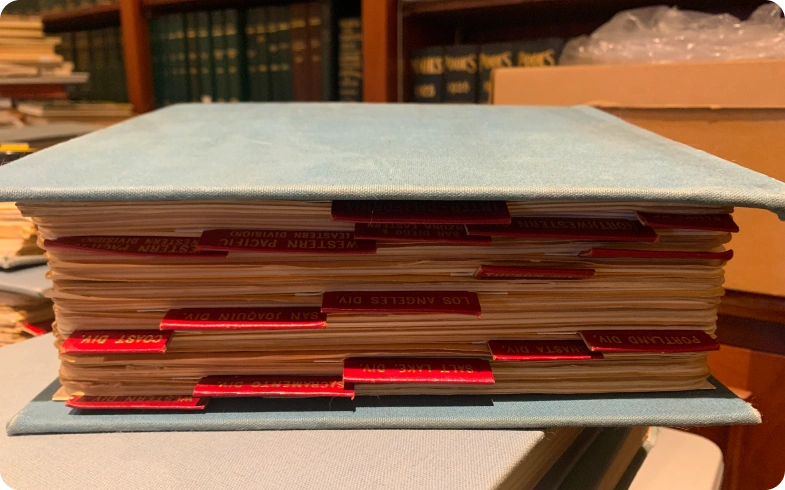
By converting these primary sources into digital formats, the California State Library preserved their integrity and enabled public access. Scholars, educators, and citizens can now explore and cite these resources as part of California’s living archival record. This initiative sets a benchmark for how state-run digitization programs can safeguard and activate government-held cultural heritage in the digital age.
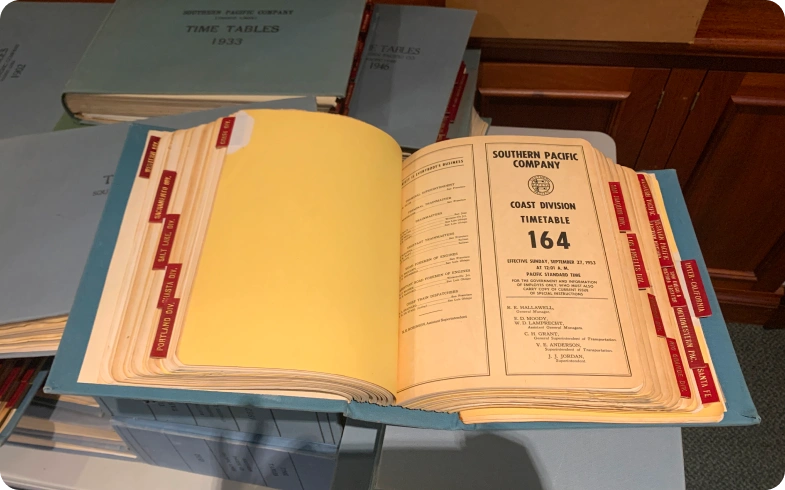
Why eRecordsUSA Is a Trusted Leader in Archival Digitization for Public and Private Institutions?
Public institutions rely on more than scanning equipment when preserving fragile, historically vital collections. They need an archival digitization partner with expertise in heritage preservation, metadata standards, and digital compliance. eRecordsUSA consistently meets these expectations with institutional-grade precision.
Our team’s portfolio includes the digitization of the Golden Gate Bridge Archives — blueprints, engineering notebooks, and legacy transit records—all handled with format-specific protocols and non-invasive techniques. Each asset was processed with meticulous metadata alignment to ensure long-term digital usability.
Our California State Library project further demonstrates our ability to manage complex, high-volume government digitization efforts. We operate from a secure, climate-controlled imaging facility calibrated to meet project-specific FADGI standards. Every workflow—whether for bound volumes, photographic negatives, or annotated documents—is designed to ensure archival fidelity, long-term accessibility, and metadata discoverability.
eRecordsUSA functions not just as a digitization vendor, but as a preservation partner committed to protecting cultural memory through compliant, secure, and standards-based digitization.
How eRecordsUSA Ensured FADGI-Compliant Digitization Standards?
eRecordsUSA digitized all eligible California State Library materials in full compliance with FADGI 3-star imaging standards—the national benchmark for archival image quality and preservation integrity. Each criterion was met through controlled systems and expert-led workflows embedded into our core digitization model.
FADGI 3-Star Compliance in Practice
1. Resolution Accuracy: eRecordsUSA captured all materials at 300–400 PPI, depending on content type, using calibrated scanners configured to meet FADGI resolution requirements for both textual documents and photographic materials.
2. Color Fidelity & Bit Depth: All images were digitized in 24-bit RGB or 8-bit grayscale, with embedded ICC color profiles. Professional-grade optics and custom lighting setups ensured color accuracy and contrast integrity.
3. Calibration Using Imaging Targets: Devices were calibrated using ISO 19264-1-compliant grayscale and color targets to preserve tonal range, sharpness, and consistency across sessions.
4. Archival File Format Standards: Master files were created as uncompressed TIFFs without any post-processing enhancements. This maintained pixel-level authenticity and adhered to long-term preservation standards.
5. Quality Control Procedures: Every image passed a dual-review protocol combining automated bit-depth and resolution checks with expert visual inspections before approval and file transfer.
eRecordsUSA treated each FADGI standard not as a checkbox, but as a foundational requirement for trustworthy, preservation-grade digitization.
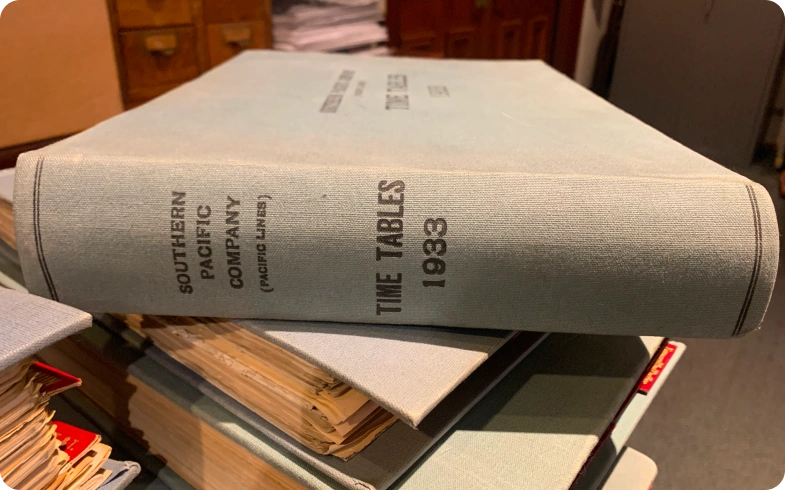
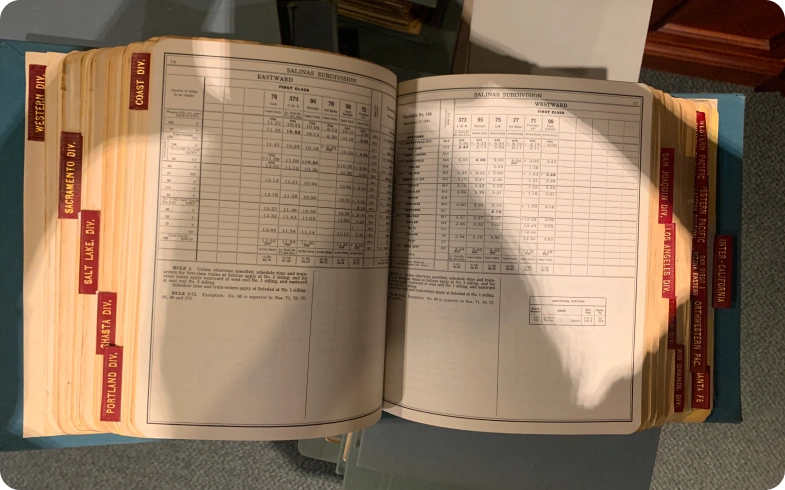
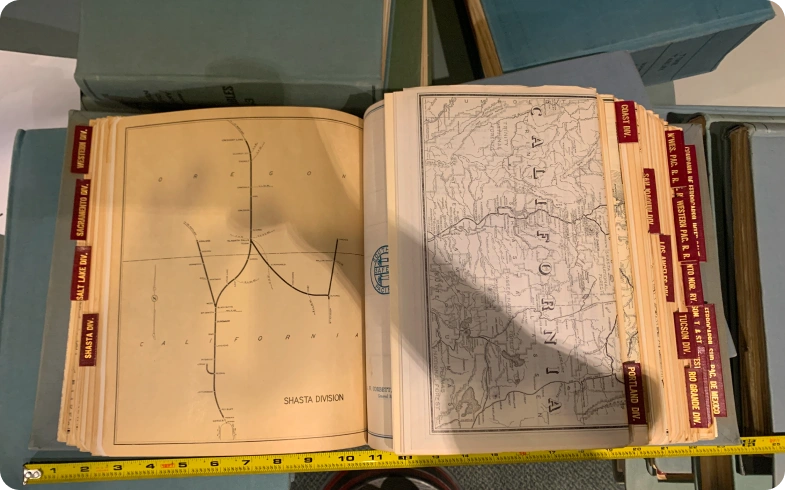
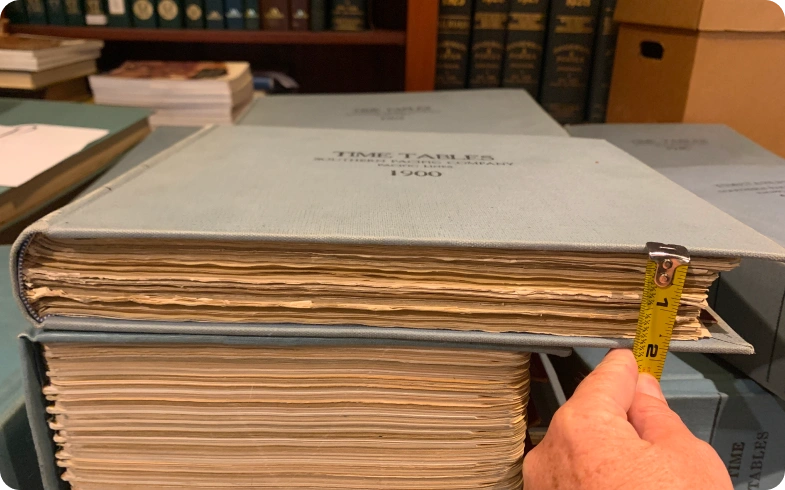
Technical Digitization Challenges eRecordsUSA Solved for the California State Library Archives
Digitizing the California State Library’s archival collections required solving a complex set of preservation challenges involving fragile formats, oversized materials, and strict metadata compliance. eRecordsUSA applied advanced imaging systems and archival precision to meet these demands within FADGI and institutional guidelines.
Key Challenges and Solutions
1. Oversized and Gutter-Sensitive Volumes: eRecordsUSA digitized bound materials with fragile foldouts using non-destructive, cradle-mounted scanners. Adaptive lighting preserved gutter-bound annotations and ensured edge-to-edge imaging accuracy.
2. Degrading Photographic Negatives: Thousands of aging 3″x5″ negatives were captured using edge-lit, zero-contact scanning methods to maintain visual fidelity without risking physical damage.
3. Double-Sided Glued Photo Prints: Historical photo albums with back-mounted images were digitized using high-resolution optical systems that bypassed flatbed scanners, preventing adhesive disruption while preserving both sides.
4. Gutter-Level Annotation Recovery: Depth-of-field optimization and angled imaging recovered marginal handwritten notes, ink stamps, and embedded metadata without distortion or loss.
5. Metadata Structuring and Ingest Readiness: Each object was tagged with Dublin Core and embedded XML metadata. Structured pipelines were aligned to the Digital Concierge Program (DCP) schema for ingest compatibility.
6. File Integrity and Verification: eRecordsUSA implemented MD5 checksum generation and validation to guarantee digital integrity, ensuring each preservation file remained authentic and tamper-proof across its lifecycle.
These solutions reflect eRecordsUSA’s command of archival digitization at scale and its commitment to regulatory precision and cultural preservation.
Non-Technical Challenges That Shaped the Execution of This Archival Digitization Project
Executing the California State Library’s digitization initiative required more than technical precision—it demanded operational discipline, metadata compliance, and stakeholder coordination. eRecordsUSA managed these challenges through structured workflows and procedural accountability designed for large-scale archival projects.
Key Operational Challenges and Solutions
1. Restricted Access Scheduling: Some archival items required curator-mediated release, necessitating secure transport, scheduled intake coordination, and daily object-level tracking throughout the workflow.
2. Item Condition Management at Intake: Materials displayed a range of vulnerabilities, including brittleness and moisture sensitivity. eRecordsUSA stabilized and processed each item under white-glove protocols in a climate-controlled environment.
3. Chain-of-Custody Enforcement: Object-level tracking systems ensured accurate provenance, sequence integrity, and documentation status from intake through final return.
4. Metadata Governance Compliance: All digital assets were validated against the California State Library’s metadata schema, including structured fields, naming conventions, and ingest-ready formatting aligned with institutional standards.
5. Scope Flexibility and Stakeholder Coordination: Weekly review meetings allowed eRecordsUSA to respond to changing priorities, clarify metadata requirements, and realign digitization sequencing—while maintaining compliance, quality, and deadlines.
This project succeeded through eRecordsUSA’s ability to manage archival workflows with strict procedural control, institutional alignment, and continuous stakeholder engagement.
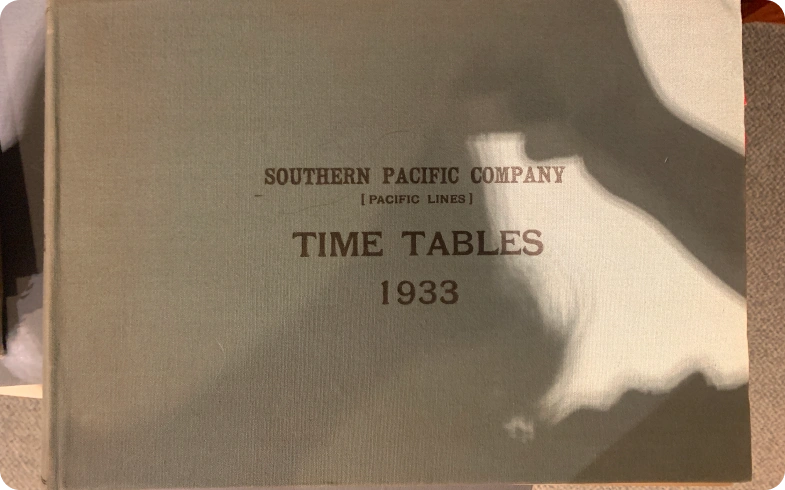
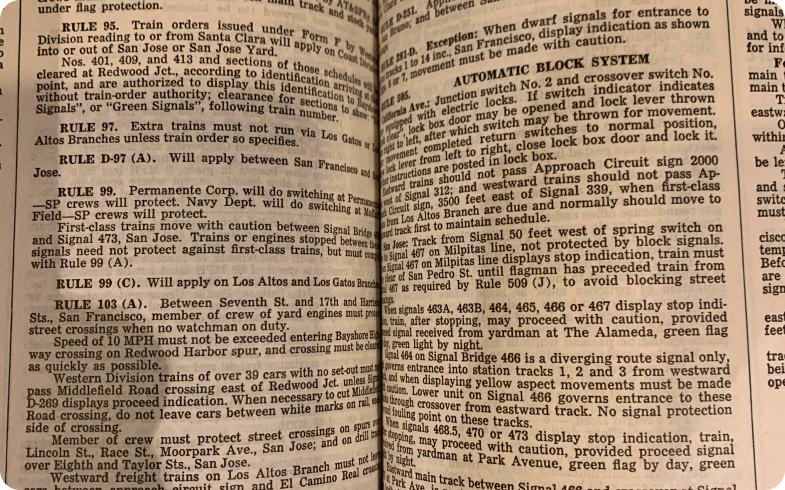
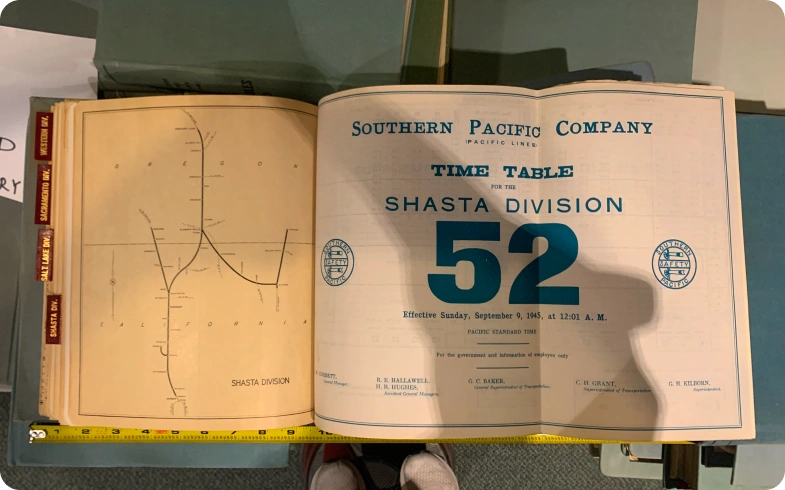
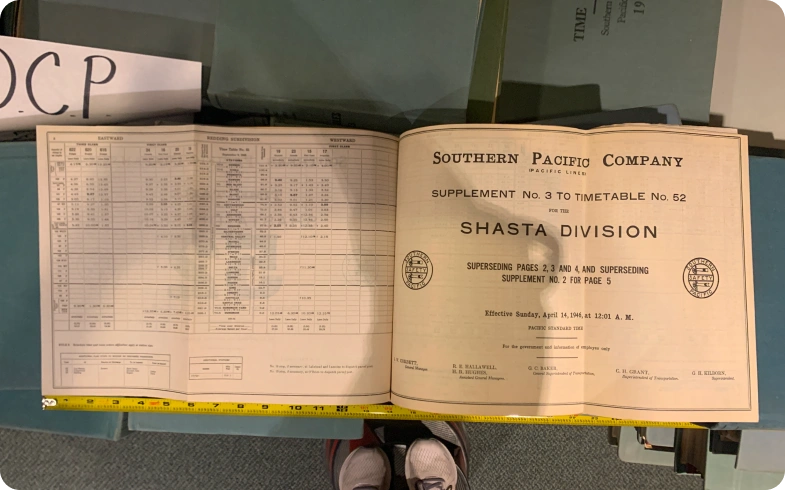
How eRecordsUSA Safeguarded Materials and Digital Assets During This Project?
Digitizing historically irreplaceable materials requires more than accurate imaging—it demands a secure infrastructure that protects both physical records and digital files from intake through delivery. eRecordsUSA enforced rigorous security protocols throughout the California State Library project to ensure preservation-grade protection.
Security Protocols Implemented
1. Controlled Access Facility: All digitization occurred in a badge-restricted imaging lab with 24/7 video surveillance and designated staging areas for secure material handling.
2. 24/7 Environmental Monitoring: Archival-safe conditions were maintained using real-time temperature, humidity, and air quality monitoring to safeguard fragile materials during storage and scanning.
3. Lifecycle-Based Asset Tracking: Every object was tracked across its entire workflow lifecycle, complementing the enforced chain-of-custody procedures from intake through final return.
4. Secure File Handling and Delivery: Digital assets were transferred using a secure delivery platform approved by the client. Metadata manifests and checksum-verified files authenticated each package and confirmed delivery integrity.
eRecordsUSA’s security framework ensured both physical and digital assets remained protected, traceable, and compliant throughout the entire digitization lifecycle.
Archival Handling Protocols eRecordsUSA Used to Protect Fragile Collections
Preserving fragile archival materials demands more than care—it requires museum-grade handling expertise and controlled workflows. eRecordsUSA applied preservation-safe protocols to protect every item before, during, and after digitization, ensuring the physical integrity of volumes, negatives, and aged photographs.
Protocols Applied During Archival Handling
1. White-Glove Handling Standards: Technicians used powder-free cotton or vinyl gloves to handle photographs, negatives, and encapsulated records. This prevented chemical transfer, surface abrasion, and fingerprint contamination.
2. Non-Adhesive, Archival-Safe Preparation: All materials were stabilized with inert supports. No self-stick notes, tapes, or pressure adhesives were permitted. Pens and markers were prohibited in processing zones to eliminate the risk of permanent marking.
3. Cradle and V-Mount Scanning Systems: Bound volumes were digitized using adjustable cradles and V-shaped book mounts, allowing natural page spread without stressing the spine. Overhangs were avoided by using scan platens sized to match or exceed each item’s dimensions.
4. Light-Safe Imaging Setup: eRecordsUSA used LED-based, non-UV lighting systems to protect materials from photochemical degradation. All lighting was regulated for intensity and heat to avoid damage to surface details.
5. Rest Cycles for Fragile Assets: Sensitive materials were pre-conditioned in a climate-controlled environment to prevent structural shock. Items with brittleness, adhesive residue, or instability were flagged and processed under client-approved stabilization protocols.
These protocols ensured that every archival object was both digitally captured and physically preserved with the highest standards of care.
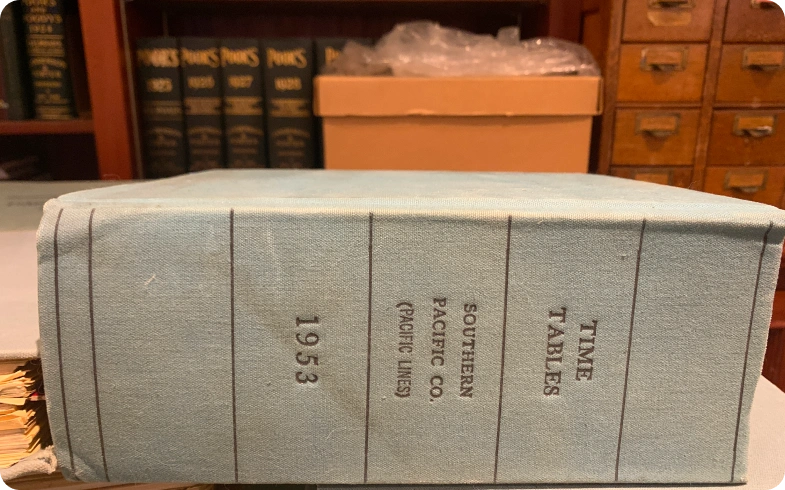
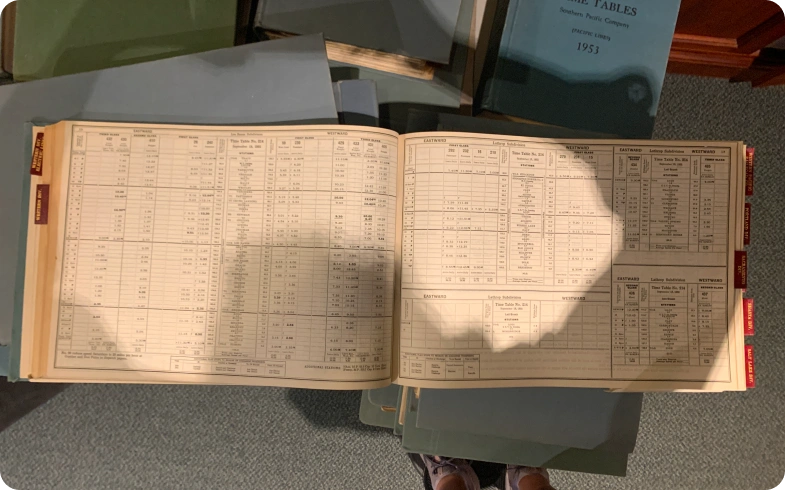
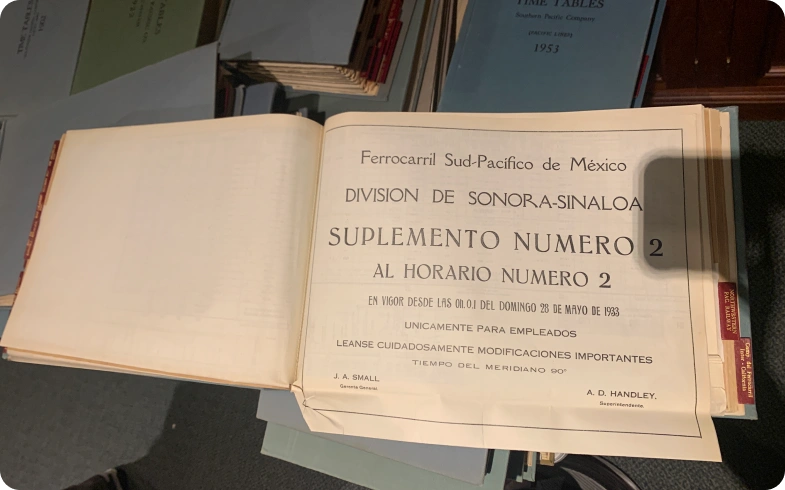
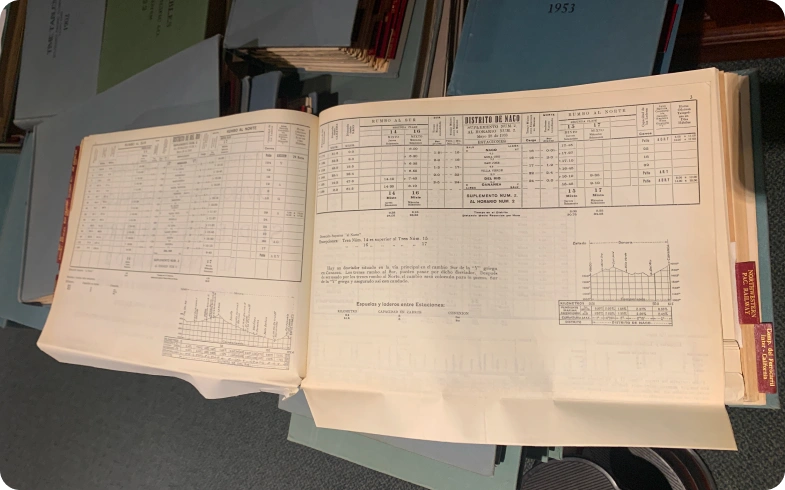
Measurable Outcomes of the California State Library Digitization Project
The California State Library digitization project delivered preservation-grade digital assets and set a scalable model for public-sector archival modernization. eRecordsUSA converted 4,138 historically significant items into compliant digital formats, securing long-term access, discoverability, and institutional continuity.
Key Deliverables and Lasting Value
1. Preservation of 64,284 Pages: Digitized fragile documents, photographic negatives, and annotated volumes—some over a century old—to prevent further deterioration and ensure permanent archival retention.
2. Dual-Format Asset Delivery: Delivered each item in both uncompressed TIFF (preservation master) and PDF/A (access copy) formats to meet institutional storage standards and public accessibility requirements.
3. Metadata Integration for Public Access: Embedded Dublin Core and XML metadata aligned with California State Library schema, enabling seamless indexing, ingest, and integration into digital library platforms.
4. Enhanced Research and Educational Access: Scholars, educators, and historians now have search-ready, indexed access to rare materials previously locked in restricted physical archives.
5. Institutional Process Model Established: Developed a repeatable framework for imaging quality assurance, metadata validation, and asset delivery that can be applied across other departments and collections.
This project created a new standard for how government archives can digitize cultural heritage collections while preserving both access and historical fidelity.
What This Project Proves About eRecordsUSA’s Role in Preserving Government Archives?
The California State Library project confirms eRecordsUSA’s leadership as a trusted partner in government archival digitization. Cultural heritage organizations and public institutions rely on our ability to preserve fragile records while meeting compliance, metadata, and access standards at scale.
eRecordsUSA digitized over 64,000 pages of historically significant materials—ranging from fragile bound volumes to film-based negatives—with precision handling, FADGI-aligned imaging, and rigorous metadata normalization.
This initiative established a repeatable framework for digital preservation that aligns with the needs of today’s researchers, future digital historians, and the accountability standards of public-sector agencies. eRecordsUSA continues to set the benchmark for safeguarding government-held cultural memory through compliant, accessible, and high-fidelity digitization.
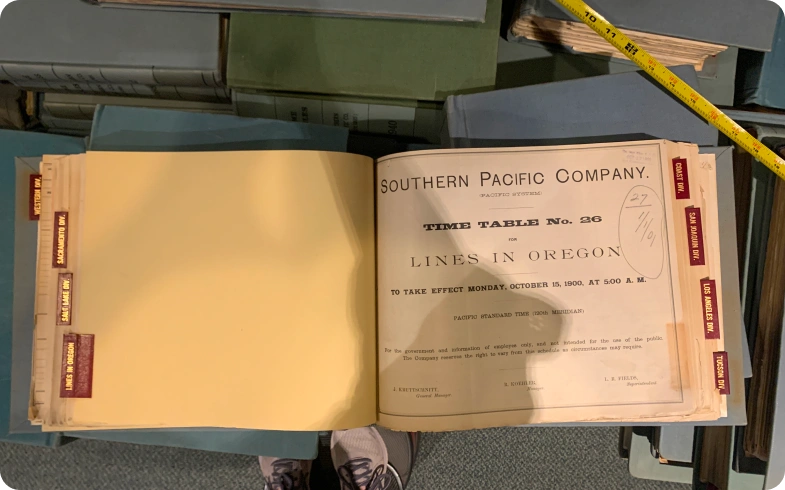
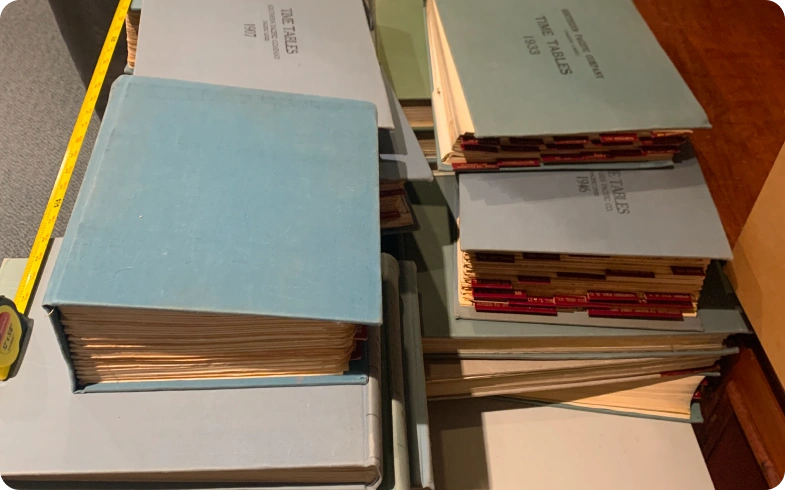
Ready to Preserve Your Institutional Archives and Legacy?
Whether you manage government records, municipal collections, or corporate heritage archives, eRecordsUSA provides scalable digitization services built for preservation, compliance, and long-term access.
Contact us today to explore how we can help safeguard your organization’s archival legacy with precision and care.